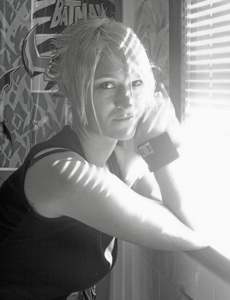No one really knows how the tradition of beer-fueled pub crawls and getting bleary-eyed, fall-down drunk at parades got started, but you can be rest-assured it has nothing to do with St. Patrick himself.
It should be pretty obvious by now that lovers of libation will take any excuse for a party and run with it. This year, forget about Killian’s and anything green. Choose one of these traditional Irish brews…
1. Guinness Draught
 Style: Stout Ale
Style: Stout Ale
History: Guinness was first developed to be a low-alcohol (4%) session beer that people could drink at lunch and return to work. If you’re lucky, you’ll find the Guinness Foreign Extra Stout in Dublin, the Caribbean or Africa, which has 7.8% alcohol content. Guinness is brewed in Dublin and is the most popular Irish beer in the US.
Fast Facts: Surprisingly enough, there are also less calories in a Guinness than a Michelob Light. Of the Big Three Irish stouts, Guinness is the driest, with the most hops and the bitterest yeast. Since Guinness is made from more un-malted barley, it has more vitamin B, E, Iron, Riboflavin and Magnesium than the competition.
Flavor: The full-bodied, creamy milkshake of a beer has notes of cappuccino and chocolate from its darker roast.
2. Beamish Stout
Style: Stout Ale
History: Beamish is the oldest brewery in Cork, Ireland’s second-largest city. Traditionally, Beamish was the Unionist, Protestant-owned brewery of Cork. To make Beamish, the ingredients undergo a two-week brewing process using the original Beamish yeast that dates back to 1792.
Fast Facts: After more than 2 years of availability in the US market, Heineken decided to stop distributing Beamish outside of Ireland so they could focus on the domestic market. Bummer!
Flavor: Dark chocolaty caramel and coffee with a light malt body and bitter, hoppy aftertaste. Beamish is sweeter than Guinness.
3. Murphy’s Irish Stout
Style: Stout Ale
History: Murphy’s was the Catholic-owned brewery of Cork and is considered a point of pride for the locals today. This dry stout is brewed to the originally recipe from 1856.
Fast Facts: Thanks to an acquisition by Heineken in 1983, Murphy’s is one of the fastest growing stout brands in the world, available in 70 countries.
Flavor: Murphy’s is the lightest and sweetest of the Big Three. The finish is more like a glass of chocolate milk with a double-shot of mocha espresso and a shot of caramel.
4. Harp Lager
Style: Lager
History: In 1960, The Great Northern Brewery made Harp to meet widespread consumer demand for pale lager beers like Budweiser.
Fast Facts: This beer was originally brewed in Dundalk, Ireland, but is now being produced in Canada, Great Britain and Australia. The initial harp logo is no longer used, as that image is trademarked by Guinness.
Flavor: Crisp, smooth and refreshing with slight floral / hop aroma and no aftertaste.
5. Smithwick’s Red Ale
Style: Ale
History: Smithwick’s dates back to 14th Century monks, making it Ireland’s oldest operating brewery, as the original Franciscan abbey still stands today. The recipe we know and love today was produced for the first Kilkenny Beer Festival and was originally dubbed “Smithwick’s Number 1.” Today, Smithwick’s is the regional favorite in South Leinster.
Fast Facts: When ordering, be sure you pronounce it “Smiddick’s” or you will sound like a huge doofus.
Flavor: Smithwick’s has a unique malty ale flavor that is almost bread-like. You’ll find it’s low on hops and more characterized by caramel.
Other noteworthy contenders include:
- Ohara’s Celtic Stout (sweet, full-bodied, roasted bite)
- Kinsale Irish Lager (golden, fading bitterness, light floral undertones)
- Kilkenny Irish Cream Ale (Less hoppy than Smithwick’s, Creamy like Guinness, mostly sweet with a hint of bitterness)
- Murphy’s Irish Red Cream Ale (dry, crisp, hoppy, hints of fruit and caramel)
- Finnegan’s Irish Amber (creamy, medium body, crisp finish)
 |
| Article: Jennn Fusion
Twitter: @jennnfusion |

